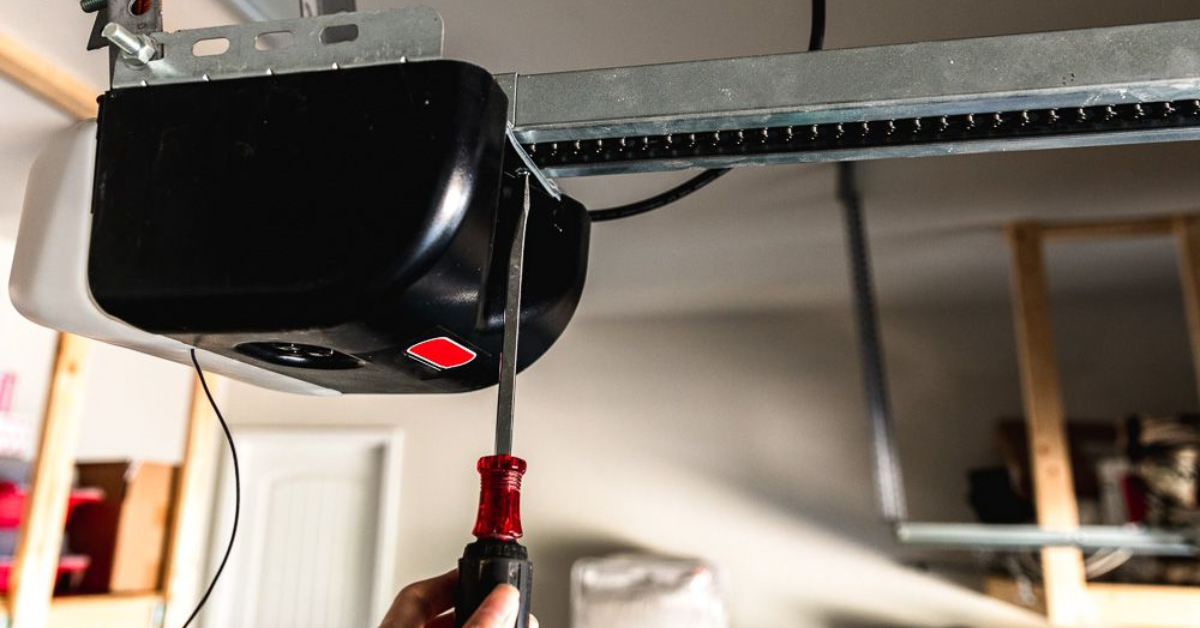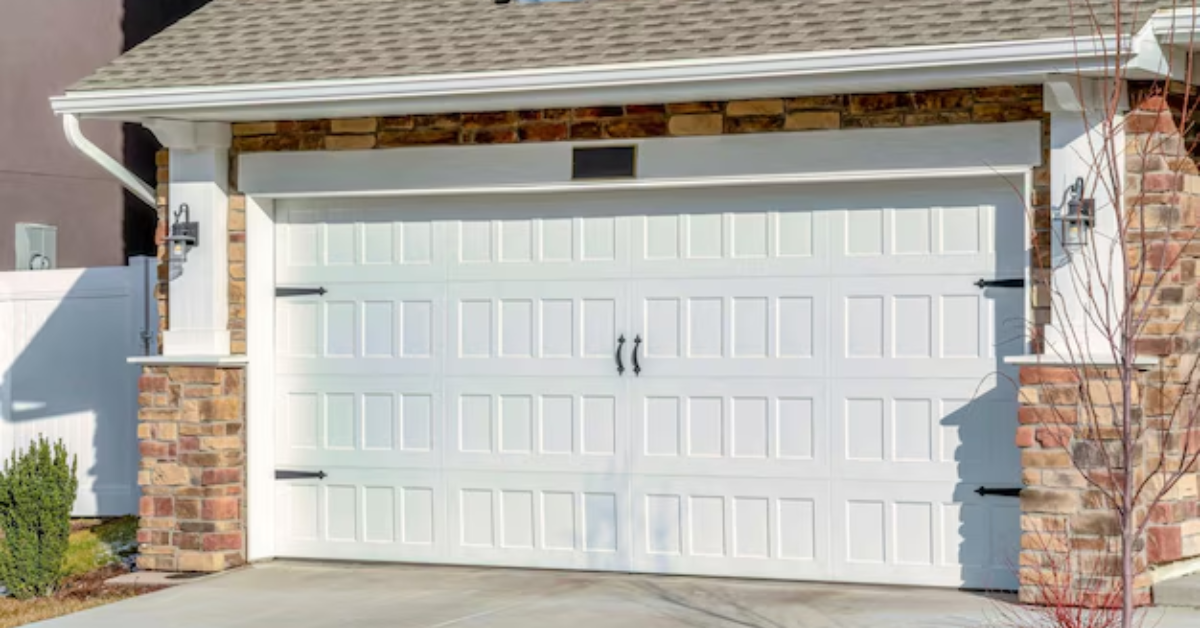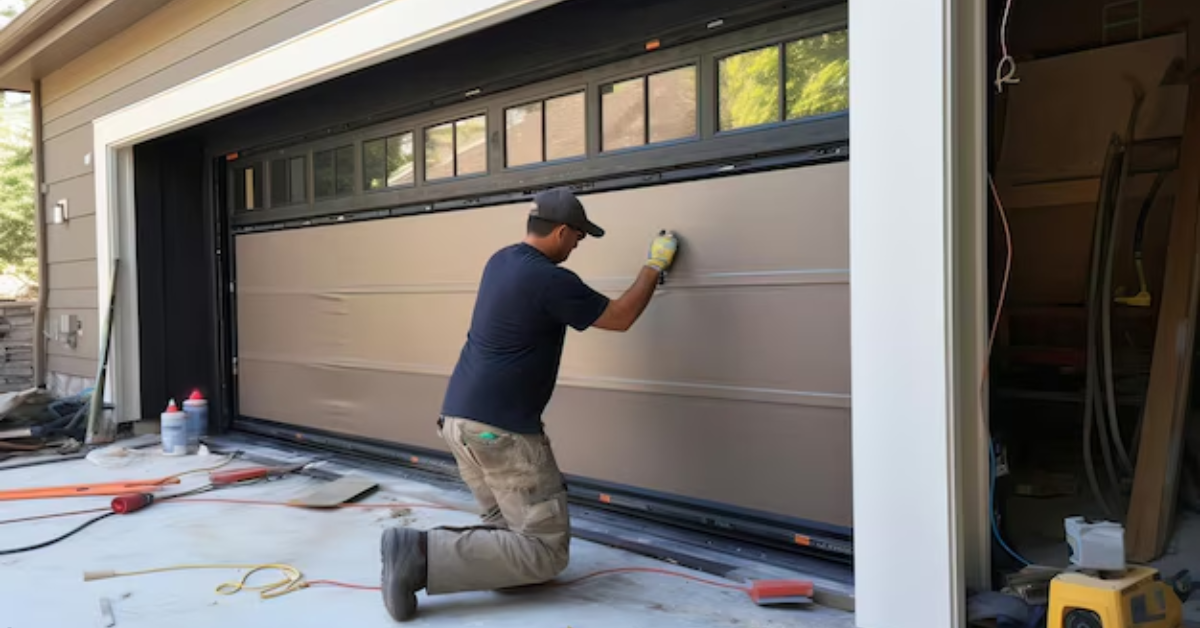What Are the Telltale Signs of a Failing Garage Door Opener?
A garage door opener stands as the sentinel of our homes' security and ease of access. In its silent operation, it ensures effortless entry and secures our valuable possessions within the confines of our homes. Yet, behind its seamless functionality lies a vulnerability—a vulnerability that manifests through subtle hints, signaling the onset of potential failure.
The importance of a well-functioning
garage door opener cannot be overstated. Beyond the sheer convenience it offers, it serves as a barrier against unauthorized access and safeguards the home against external elements. However, within the routine of its daily use, signs may emerge, often disguised as innocuous irregularities, hinting at an underlying deterioration.
The importance of understanding these telltale signs cannot be overstated. It is the key to preempting potential malfunctions and averting unforeseen disruptions. From
unusual noises that disrupt the usual tranquility to physical indicators hinting at wear and tear, these signs serve as the silent messengers urging attention and maintenance.
This exploration delves into the intricacies of identifying these signs—offering insights into the subtle nuances that could hint at an impending failure. By unraveling these cues, homeowners gain the power to intervene before a minor anomaly transforms into a major inconvenience or security concern.
Unusual Noises
Unusual noises, particularly squeaking or grinding sounds, emitted by a garage door opener can be indicative of underlying issues that warrant attention. Recognizing the potential causes and understanding their implications is vital to maintaining the optimal functionality of your garage door system.
Lack of Lubrication: One common cause of squeaking or grinding noises in a garage door opener involves inadequate
lubrication. Over time, moving parts within the system, such as rollers, tracks, or hinges, can experience friction, resulting in these distressing sounds. The lack of proper lubrication can lead to increased wear and tear on these components, potentially causing them to malfunction. This neglect may shorten the lifespan of the garage door opener and compromise its performance.
Worn or Misaligned Components:
Wear and tear affecting various parts of the garage door mechanism, including the opener's drive gears or pulleys, can lead to irregular movements, producing unpleasant noises during door operation. If left unaddressed, these
worn or misaligned components can exacerbate the problem, leading to further damage to the garage door system. Continued operation without rectifying these issues may result in a compromised functionality and potentially costly repairs.
When to Be Concerned About These Noises
Immediate attention is advisable upon observing persistent squeaking or grinding sounds while operating the garage door. While occasional noises might not necessarily signify an imminent failure, consistent or escalating sounds should prompt inspection and, if necessary, maintenance.
Squeaking or grinding sounds from a garage door opener serve as audible signals,
alerting homeowners to potential issues within the system. Regular maintenance, including proper lubrication and periodic checks on the condition of moving components, can help mitigate these noises and prevent the escalation of underlying problems.
Addressing these noises promptly is important to ensure the continued smooth operation and longevity of the garage door opener. Neglecting these auditory warnings could lead to more severe damage and, consequently, greater expenses in repairs or replacements. Therefore, being attentive to and proactive about unusual noises is integral to maintaining the optimal performance of your garage door system.
Slow or Unsteady Movement
Slow or unsteady movements of a garage door, especially when responding to commands, indicate potential issues within the opener system. Recognizing these irregularities is crucial for timely intervention.
Potential Reasons Behind Slow Responses
- Over time, various components, such as springs or cables, may experience wear and tear, causing the door to move slower than usual. This wear can compromise the efficiency and smooth operation of the garage door opener, leading to slower movements and potential operational failure.
- Inadequate maintenance, including lack of lubrication or alignment issues, can impede the swift movement of the door in response to commands. Neglecting regular maintenance can lead to increased friction and resistance, resulting in sluggish or delayed door movements.
Jerky or Uneven Door Movements
Noticing irregularities in the door's motion, such as jerking or uneven movements, is another sign of potential problems with the garage door opener.
- Jerky or uneven door movements pose safety risks to both property and individuals. These irregular motions can lead to accidents, causing injury or damage to objects in the vicinity. Such erratic movements may indicate underlying issues with the opener mechanism, which, if unresolved, can worsen and compromise the safety of the garage door system.
- Misaligned tracks or faulty sensors can result in the door moving unevenly, raising safety concerns. A misaligned door not only affects its functionality but also poses significant safety hazards, especially if the door fails to close or lock securely.
Recognizing slow, unsteady, or jerky movements in a garage door opener is crucial for preventing potential accidents and ensuring the system's optimal performance. Identifying these irregularities early allows for timely inspection and maintenance, minimizing safety risks and preventing further damage to the opener mechanism.
Regular maintenance, addressing worn components, and ensuring proper alignment are essential to maintain the smooth and safe operation of your garage door system. Addressing these issues promptly not only enhances safety but also extends the longevity of the opener, ensuring its continued reliability.
Visual and Operational Anomalies
Slow or unsteady movements when commanding a garage door's operation often signal underlying issues within the opener system, requiring prompt attention to avoid potential complications. These irregularities can be attributed to various causes, such as wear and tear in components like springs or cables over time. The resulting compromised efficiency and smooth operation of the garage door opener lead to slower movements and possible operational failures. Additionally, inadequate maintenance practices, including insufficient lubrication or alignment issues, contribute to impeding the door's swift response to commands, causing sluggish or delayed movements due to increased friction and resistance.
Similarly, recognizing jerky or uneven door movements serves as a crucial indicator of
potential problems within the garage door opener. These irregular motions pose safety risks to both property and individuals, potentially resulting in accidents or damage to surrounding objects. Such erratic movements often signify underlying issues with the opener mechanism or door misalignment, both compromising the system's functionality and safety. Misaligned tracks or faulty sensors contribute to the door's uneven movement, further raising safety concerns, especially if the door fails to securely close or lock.
Timely recognition of these irregularities enables prompt inspection and maintenance, mitigating safety risks and preventing further damage to the opener mechanism. Regular upkeep, coupled with addressing worn components and ensuring proper alignment, becomes imperative in maintaining a smooth and safe operation for the garage door system, ultimately enhancing safety and extending the opener's reliability and longevity.
Physical Wear and Tear
Physical wear and tear on the mechanical components of a garage door opener, notably on elements like cables, springs, or rollers, warrants careful inspection. Examining these parts for visible signs of wear is critical in understanding their impact on the functionality of the door opener. Over time, cables can fray, springs may lose tension, and rollers might exhibit signs of deterioration. Such wear can hinder the smooth operation of the garage door system. Frayed cables or worn-out springs not only compromise the door's balance but also pose safety risks. Similarly, damaged or worn rollers can cause the door to move unevenly, affecting its overall performance and potentially leading to more extensive issues if not addressed promptly.
Moreover,
visible damage or misalignment of door parts can significantly impact the garage door opener's functionality. Assessing the physical condition of various components, such as tracks, hinges, or panels, is crucial. Damage or misalignment can impede the door's movement along its tracks, resulting in difficulty in opening or closing smoothly. Misaligned tracks or damaged panels can exert added stress on the opener mechanism, leading to premature wear and operational inefficiency. These issues not only affect the door's functionality but also compromise the safety and security of the entire garage area.
Addressing physical damage or misalignment promptly is essential to maintain the optimal performance of the garage door opener. Regular inspections, coupled with timely repairs or replacements of worn-out components and realignment of damaged parts, can prevent further deterioration. By attending to these visible signs of wear and damage, homeowners can ensure the smooth and safe operation of their garage door system while prolonging the lifespan of the opener. Regular maintenance remains pivotal in mitigating issues stemming from physical wear and tear, preserving the efficiency and reliability of the garage door opener for the long term.
Safety and Security Concerns
Safety mechanisms within garage door openers are integral components that ensure the protection of both property and individuals. These mechanisms, including auto-reverse features and sensors, are designed to prevent accidents and injuries by halting the door's movement if an obstruction is detected. Understanding the significance of these safety features is paramount, as they serve as the first line of defense against potential hazards.
However, when safety features malfunction, warning signs begin to emerge. Failure of the auto-reverse function or inconsistent sensor operations are notable indicators of safety mechanism issues. A door that fails to reverse upon encountering an obstruction or sensors that don’t detect objects or individuals in the door's path signal potential malfunction. Ignoring these warning signs poses significant risks to safety, potentially leading to accidents or injuries during door operation.
Beyond safety concerns, a failing garage door opener can compromise home security. An unreliable opener might fail to securely close the door, leaving the property vulnerable to unauthorized access. Additionally, malfunctioning openers may not engage locking mechanisms properly, increasing the risk of intrusions or burglaries. This jeopardizes the safety of belongings stored in the garage and compromises the overall security of the household.
Addressing safety and security concerns involves proactive measures. Regular maintenance and inspections of safety features are crucial. Ensuring that
sensors are clean, aligned, and responsive, and verifying the proper functioning of auto-reverse mechanisms, are essential steps. Additionally, promptly addressing any malfunctions or inconsistencies in the opener system can mitigate security vulnerabilities. Upgrading to modern openers equipped with enhanced security features, such as rolling code technology or smartphone-controlled access, can also bolster home security.
Ultimately, prioritizing the maintenance and proper functioning of safety features in garage door openers is fundamental. By addressing safety concerns and promptly resolving malfunctions, homeowners safeguard against potential accidents and fortify the security of their homes, fostering a safe and secure environment for their families and belongings.
Conclusion
Recognizing key signs—such as unusual noises, slow or erratic movements, visible wear, or safety feature malfunctions—serves as an essential guide in identifying a failing garage door opener. Timely inspection and regular maintenance are pivotal in addressing these issues, ensuring the optimal performance and safety of the system. For complex or persistent problems, seeking professional assessment and considering potential replacement options remain prudent steps towards maintaining a secure, efficient, and reliable garage door opener system.




